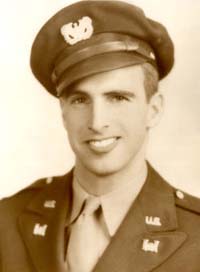299th Combat Engineer Battalion – Jean Tucker
- 299th Combat Engineer Battalion – Jean Tucker Ben Buehler-Garcia 39:51
The 299th Combat Engineer Battalion was the only combat engineer unit to land on both Omaha and Utah beaches during the D-Day invasion. Some of the engineers landed before any other allied soldiers set foot on the beaches earning them the nickname “First on Omaha”. Chief Warrant Officer James W. Tucker was among them. His daughter Jean joins us to share more about the “Famous 299th”.
James commanded a group of eight armored tractors whose mission was to clear obstacles and open paths off the Normandy beaches. One third of the Combat Engineer Battalion that landed on Omaha beach was killed missing or wounded. For their heroic efforts that day, they would be awarded the Presidential Unit Citation.
Tucker was also assigned the somber job of creating the first American cemetery in Normandy. There were so many bodies on the beaches that the equipment could not land without driving over the bodies of their fellow soldiers. Tucker used a bulldozer to dig a mass grave while still under fire and he and his comrades “stacked the bodies like cordwood.” These remains were eventually relocated.
Members of the 299th would fight and build their way across Europe to the heart of Germany.
Jean was so inspired by her father’s stories she has become a passionate advocate for their history. She single handedly manages their website and is continuously tracking down photos and stories from the families of members of the 299th Combat Engineers. Family or living members of the Battalion are encouraged to contact Jean through their website.
Jean and I also spend a great deal of time discussing the importance of recording these stories and history of generations that are rapidly passing away. She also regularly interacts with the “descendants” of this famous group – the 299th Brigade Engineer Battalion currently headquartered at Fort Carson, Colorado.
Jean also shares an intriguing story of the “spat” between the Army and the Navy over who should have responsibility for clearing obstacles on the landing beaches. They eventually agreed that any obstacles that were visible at high tide they would be the Army’s responsibility.

























